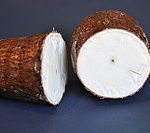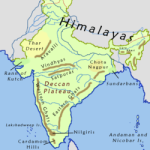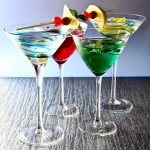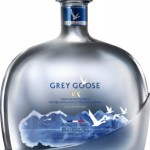What influence has it had on international alcohol beverages?
(The earlier posting on the Columbian Exchange generated a great deal of comment and emails and I invited Mr. Desmond Nazareth of Agave India Industries Pvt. Ltd to share some further thoughts on the subject. So, here is a guest blog posting from him. In this article Desmond introduces a wide array of local alcohol products from around the world, some of which were new to me.)
The Columbian Exchange between the so-called ‘Old’ World (mainly Eurasia) and ‘New’ World (the Americas) was more than an ‘event’ – it was a ‘process’ that started in the 16th century and continues in a more generic sense even today.
In this guest blog, I would like to discuss the impact of this Exchange process on international alcoholic beverages and, make some suggestions for ‘opening up’ alcobev categories.
Fermented beverages across the world
 Contemporary scholarship tells us that up to the 12th century AD or so, most cultures around the world consumed various forms of naturally fermented beverage. These were typically what we today call ‘wines’ (fermented grapes, fruit and berry juices), ‘beers’ (assorted cooked and fermented grains), and fermented natural sweet liquids (fermented palm sap, agave sap, nectar from flowers, honey).
Contemporary scholarship tells us that up to the 12th century AD or so, most cultures around the world consumed various forms of naturally fermented beverage. These were typically what we today call ‘wines’ (fermented grapes, fruit and berry juices), ‘beers’ (assorted cooked and fermented grains), and fermented natural sweet liquids (fermented palm sap, agave sap, nectar from flowers, honey).
The introduction, and role, of distillation
In the Old World, using various fermented beverages as their substrates, distilled (and infused) potable alcohol began around the 12th century AD, giving rise to the plethora of ‘spirits’ and ‘liqueurs’ of today – the technique used initially was ‘pot-still’ distillation and later included ‘column’ distillation.
The New World knew nothing of distillation techniques until the 16th century AD, when it was introduced there by Old World colonizers.
With distillation being part of the technology that featured in the Exchange, it was applied to the variety of fermented beverages in the New World, including those made from ‘dramatis botanae’ that were local, and others that came with the Exchange.
Among the botanical species introduced to the New World, sugarcane (and the by-product, molasses) was by far the most important – the basis for light and heavy rums. Grapes, of course, became the basis of countless ‘local’ New World wines and spirits.
Species introduced to the Old World included cashew, potatoes, sweet potatoes, cassava, agave and corn – cooked and fermented, either alone or in combination with other local substrates (and sometimes a substitute ingredient), these became the basis of so-called ‘local’ distilled spirits.

The advent of claims for ‘local’ beverages: GIs, AOs…
In today’s world, various regions and countries lay claim to a ‘privileged’ status for a variety of alcoholic beverages, with the recent introduction of ‘international trademarks’ in the form of Geographical Indications (GIs) and Appellations of Origin(AOs), which are protected by the WTO and affiliates. Examples of these abound: Scotland’s ‘Scotch’, USA’s ‘Bourbon’ , Mexico’s ‘Tequila’, Brazil’s ‘Cachaça’, Goa’s ‘Feni’, etc.
Consider some ‘local’ alcobev that resulted directly from the Columbian Exchange:

- grape based ‘pisco’, with Chile contesting Peru for ‘ownership’
- grape based wines in California, Chile, Argentina etc.
- grape based spirits like ‘singani’ in Bolivia
- cashew apple based ‘feni’ in Goa, India
- agave based spirits in India
- molasses and sugarcane based rum and cachaça in the Caribbean, and South america
- cassava based spirit in sub-Saharan Africa
- single-malt whisky in Brazil, Japan and many other countries
- potato based ‘horilka’ in Ukraine, vodka in Poland and Germany, ‘akvavit’ in Scandinavia, ‘poitín’ in Ireland, ‘tuzemák’ in the Czech Republic
- rye based whisky in Canada
- sweet potato using ‘soju’ in Korea & ‘shōchū’ in Japan
- the list goes on…
Now, in none of these countries or regions can one say that they produce only the product whose ‘localness’ they are trying to protect – in general, a variety of alcoholic beverages ‘originating’ from all over the globe are made ‘locally’ in most other parts of the globe.
In an increasingly connected, globalized world, does this sort of ‘protectionism’ make sense?
The question raised by Agave India

A case in point is the artisanal, small batch agave spirit that Agave India officially makes in India (since 2010), from blue-green agave that has been growing ‘locally’ on the Deccan Plateau for at least one hundred years. We would like our agave spirits to compete internationally with agave spirits made in Mexico – but the international competitions recognize only ‘Tequila’ or ‘Mezcal’ and do not allow us to compete within those ‘protected name’ categories. We’ve tried to make an argument for a larger category, ‘Agave Spirits’, in which ‘Indian agave spirits’ can go up against ‘Mexican agave spirits’, but so far to no avail.
We also make an artisanal, small batch sugarcane spirit in India, that we call ‘Pure Cane’ – but we cannot compete with ‘Cachaças’ in their category for the same reasons – should we not have an international category of ‘Sugarcane (or Cane) spirits’? It would make the many international producers of fine cane spirits happy to be recognized.
Perhaps, one day, globalization will remove meaningless barriers and productive exchanges of all kinds will take hold – some of which have very ancient geological and human histories.
(Acknowledgements: to the amazing, globalized and free resource that we know and love: ‘Wikipedia’)
Thank you, Desmond.






